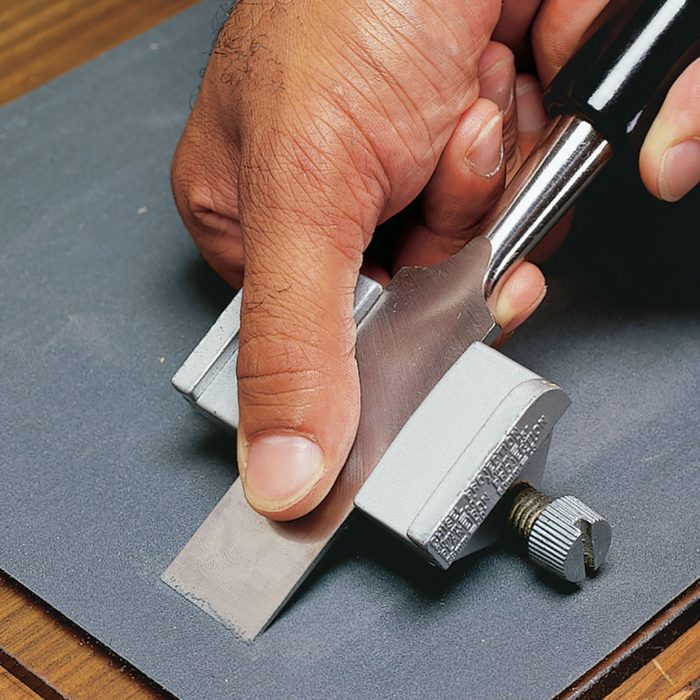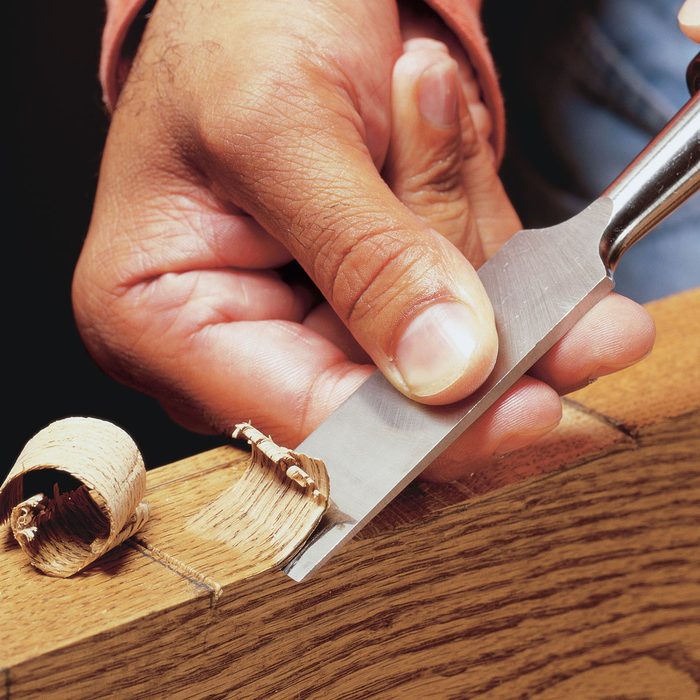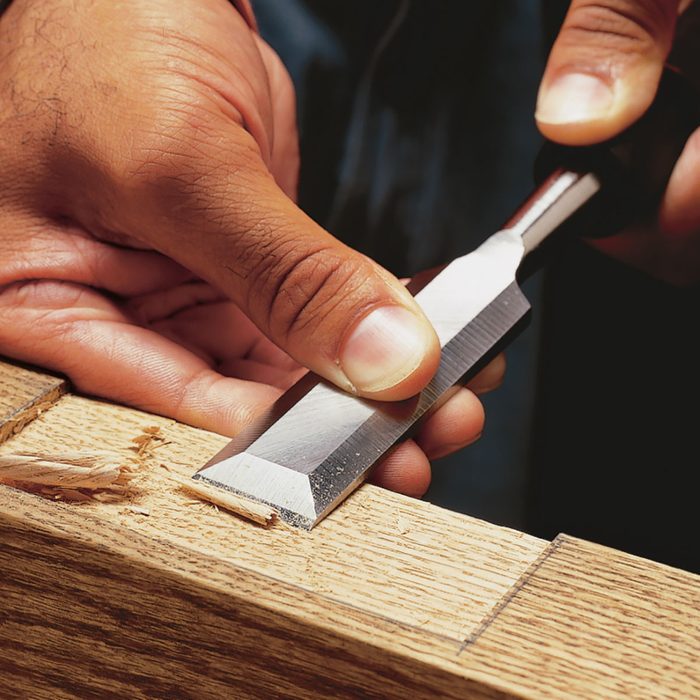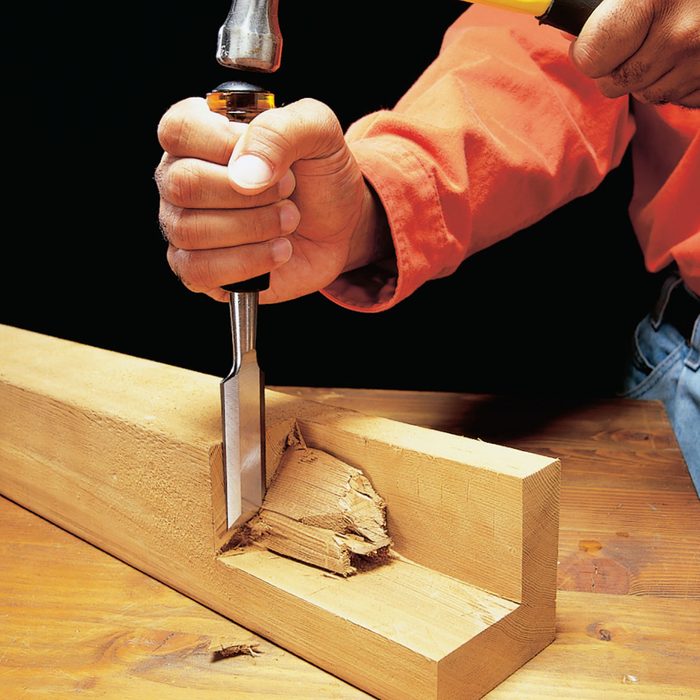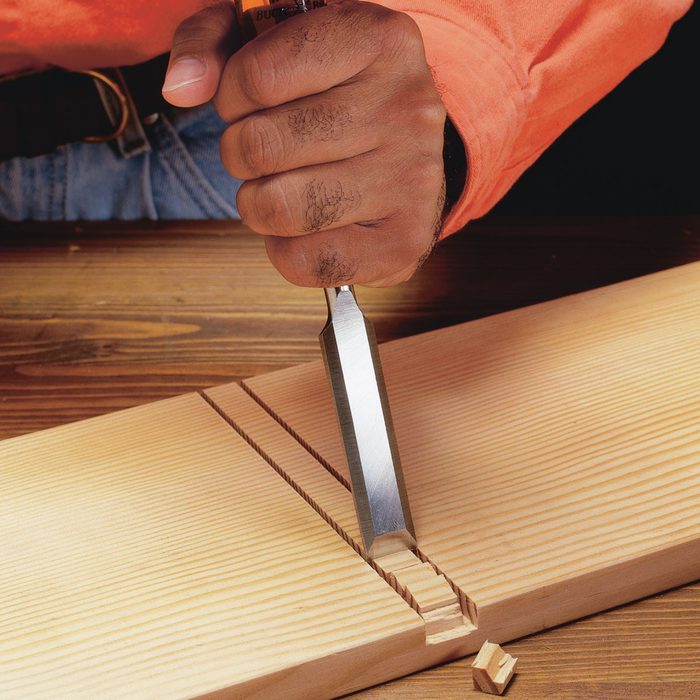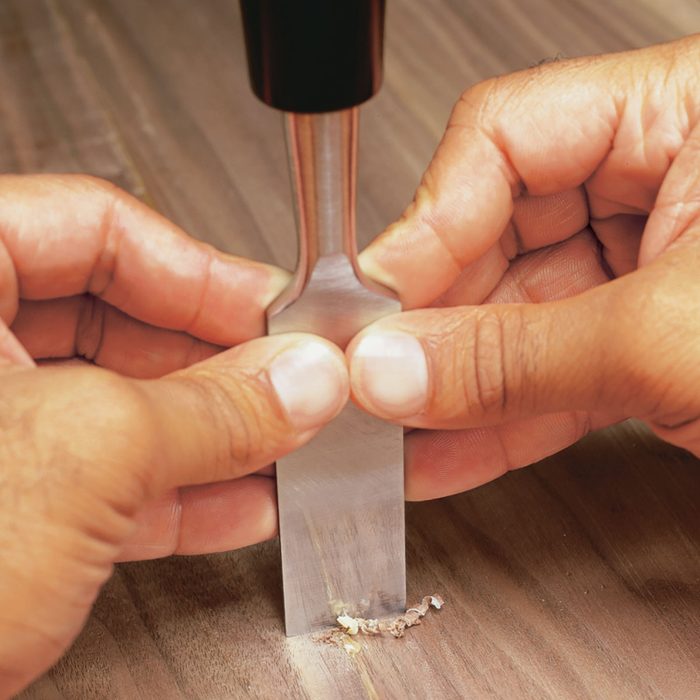Wood Chisel Basics
You may not need one often, but when it comes time to carve out a recess for a hinge or strike plate, nothing beats a razor-sharp wood chisel. Here we’ll show you some basic chiseling techniques and sharpening tips so you’ll be ready for any chiseling task with a woodworking chisel set.
Start with a new sharp 3/4-inch chisel for all-purpose use. Keep your old dull chisel handy for jobs like cutting nails or scraping caulk. Buy one with an impact-resistant plastic handle. You can pound on these with a hammer without damaging them. Good-quality chisels don’t cost much, and if you have a little extra cash, buy three—1/2-inch, 3/4-inch and 1-inch—for a good starter set.
Keep in mind that even brand new chisels will need sharpening. Put your chisels in a sock or a special canvas roll between uses to protect the cutting edge.
Mortise Cuts
Start recesses or mortises by outlining the area with a sharp utility knife or by making a series of shallow chisel cuts perpendicular to the surface. Skip this step and you risk chipping wood outside the mortise. After you’ve carved your outline, remove thin slices by tapping the chisel with a hammer, bevel side down, to carve out the wood inside the perimeter.
Pro Tip: Chiseling with the grain can sometimes have disastrous results. If the grain runs deeper into the wood, it’ll direct the chisel too deep. Stop and chisel from the opposite direction if you feel this happening.
Paring Cut
Pare thin slices of wood to flatten the bottom of an open recess. Keep the back of the chisel flat on the wood. For easier slicing, pivot the chisel as you cut to move the blade in an arc.
If the recess is open on one side, like a hinge mortise, flatten the bottom by paring off thin slices with the back, unbeveled side of the chisel held flat to the wood. In general, when you’re shaving into a piece of wood, face the bevel down. When you’re flattening a cut and have access from the side, face the bevel up and hold the back of the chisel tight to the surface.
Chopping Cut
Chop out large amounts of wood by slicing off small amounts with each cut. Strike the chisel with a hammer and chop down about 1/2-inch. Then chisel from the end to remove the piece before continuing. Your chisel must be sharp for this cut.
Chop and Pare
Chisel out dadoes and other more precise joints a little at a time with a series of shallow cuts rather than driving the chisel too deep. Use a hammer or mallet for rough work or press with the heel of your hand for lighter cutting chores or finer cuts.
Scrape a Glue Joint
Scrape glue joints or other imperfections from wood projects by holding the blade at a right angle to the wood with the back of the chisel facing you. To remove thin shavings, support the blade with your fingers and press down while you draw the chisel toward you.
Pro Tip: Scraping requires a perfectly flat, sharp edge so that the chisel can scrape cleanly without leaving scratch marks in the wood.
